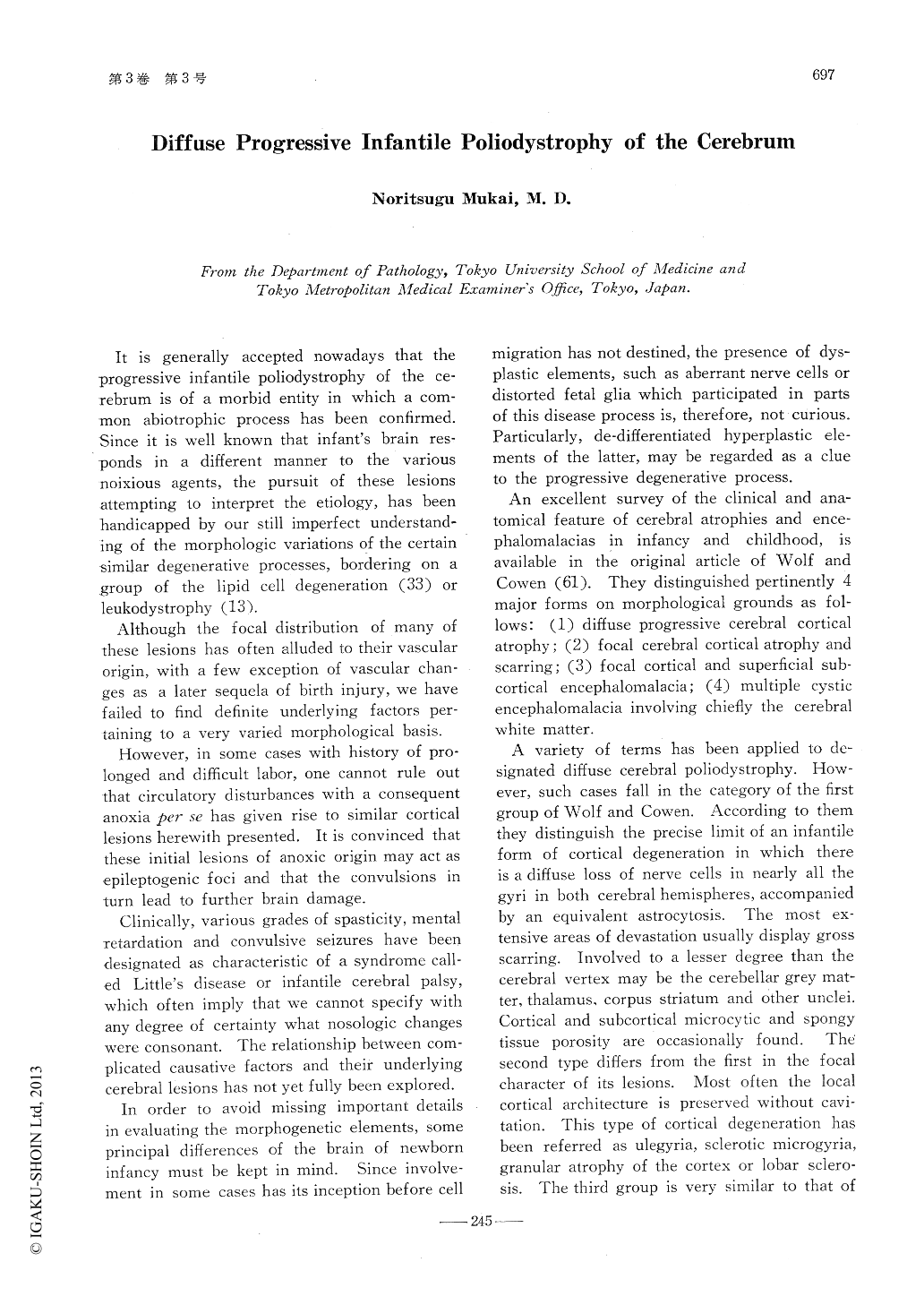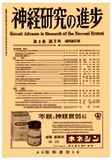- 有料閲覧
- 文献概要
- 1ページ目
The case described is of a female infant born slightly asphyxiated after a difficult labor who, following a normal physical development up to three months of age, revealed progressive mental deterioration, convulsive seizures and generalized spasticity leading to death at the age of 2 year and 7 months. The pathologic findings consisted of;(1.)extensive degeneration of the neuronal cells of the cerebral cortex, particularly in the bilateral parietooccipital regions. The old almost extinct scarring of the right parietal and of the bilateral occipital lobes referred to as the initial damage of these progressive consecutive involvements. Diffuse homogenous cortical affection was attributed to a postictal manifestation following repeated insults. The third and fourth laminae or the lowermost layer of the cortex were always the chief sufferers. The mcdality of these morphological manifestations may be discussed under the classification of Wolf and Cowen.;(2.)While the basal ganglia was grossly normal, there was mild degree of neuronal diminution with an accompanying inert astrocytosis. Depigmentation of neurons in the substantia nigra was striking. In the Sommer's sector, field h, and 11, revealed mild focal cell loss with inert astrocytosis. No cerebellar atrophy in the gross, but degenerated Purkinje cells and mild Bergman astrocytosis were observed;(3.)Myriad foci of giant dysplastic glia intermingling with scarring. In the subpendymal matrix, numerous fetal filial proliferation was found. These regressive dysplastic elements may be considerd as a consequence of frustration in their normal act of division followinganoxia;(4.)Depletion of mesenchymal reparatory process in this case was rather divergent to the common knowledge of neuropathology. The cause of the cystic degeneration may also be due to functional or mechanically induced circulatory disturbances;(5.)The clinical and pathologic aspects of the previously reported infantile form of poliodystrophy were comparatively reviewed. The lesions described were almost entirely confined to the gray matter, in direct contradistinction to the pathology in leukodystrophy. That circulatory disturbances of venous or arterial system with the ensuing postparoxysmal anoxia may produce the main effect are seemingly almost incontroversial from the analysis of this case.

Copyright © 1959, Igaku-Shoin Ltd. All rights reserved.


